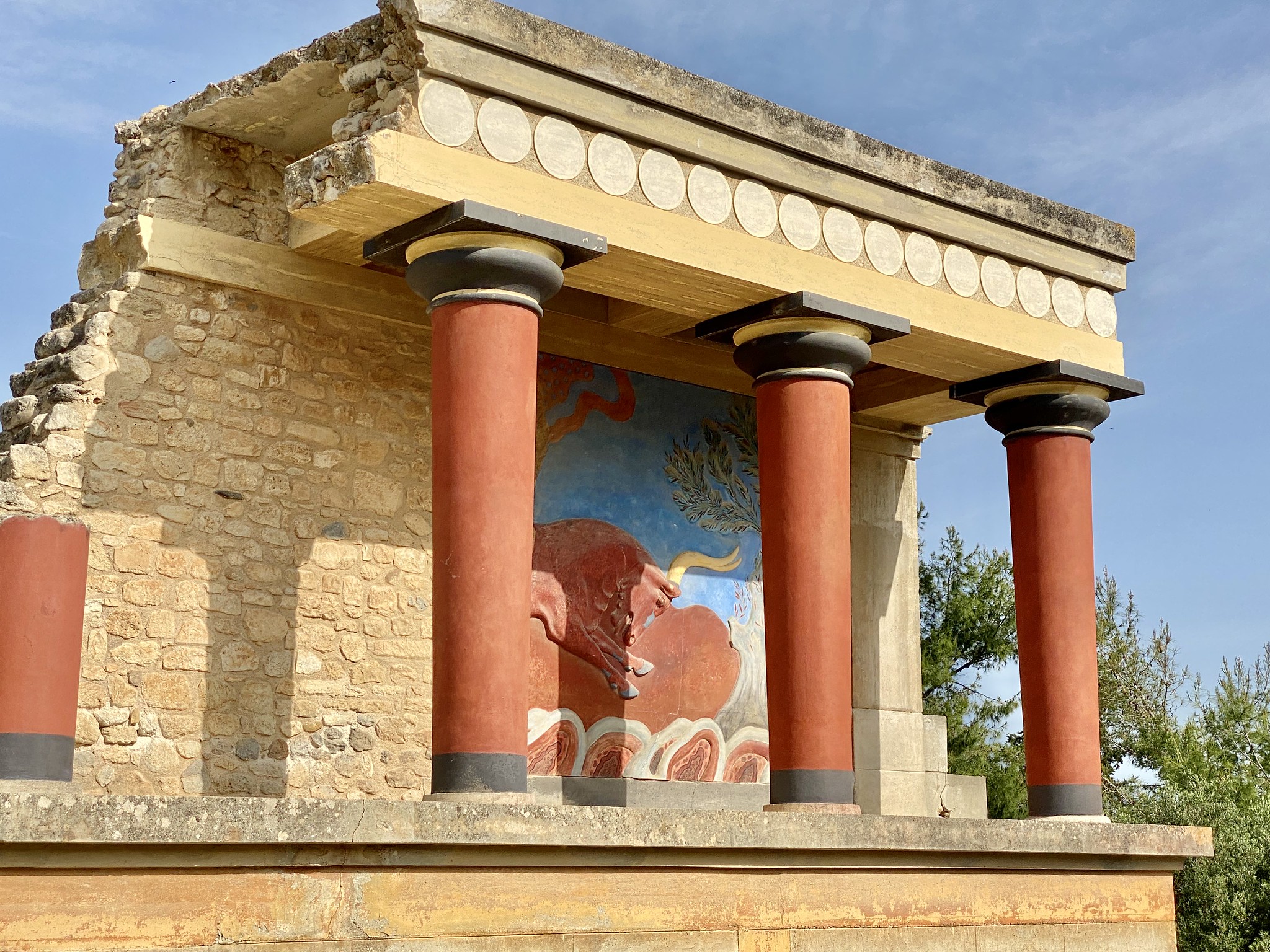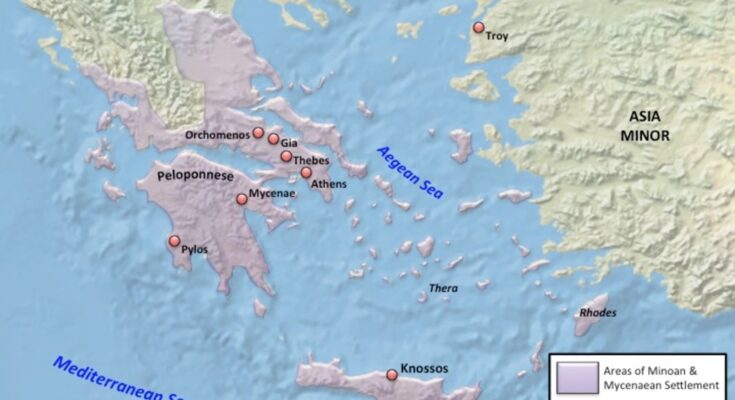The Minoans ruled over Crete and many of the smaller Aegean islands throughout much of the Bronze Age. However, was this nation ever united into a single, unified Minoan empire, or were the Minoans separated into various distinct kingdoms each with its own ruler? In this article, we will examine what the evidence reveals.
The difficulty with assessing the Minoan empire
The first thing that we need to recognize is that our knowledge of the Minoan civilization is severely limited due to the simple but important fact that we cannot read their script. The Minoans used Linear A. This is very similar to Linear B, the script of the Mycenaean Greeks.
However, unlike in the case of the Greeks, scholars have not yet been able to translate Minoan inscriptions. This means that we cannot read Minoan writing. Due to this, we are not able to use the contemporary inscriptions of this nation to help us establish whether or not there was ever a Minoan empire.
This means that we need to rely purely on archaeological evidence. This is problematic, since archaeological traces of an empire are not always clear. Take, for instance, the Roman Empire. From thousands of written inscriptions and contemporary documents, we know without any doubt that this empire existed.
Yet, if we were to ignore the written sources and rely merely on the spread of material culture, we could easily call the existence of the Roman Empire into question. We find a huge variety of cultures, architectural styles, and religions across its territories. Based on this, one might argue that Roman material culture was widespread simply through trade and cultural influence.
Minoan archaeology
In line with this simple but flawed logic, some might argue that there cannot have been a Minoan empire. After all, we witness Minoan influences to varying degrees throughout the Aegean with many islands maintaining their own distinct culture.
However, as the example from the Roman Empire illustrates, the continuation of distinct cultures does not mean there was not a single empire ruling over them all. Therefore, archaeology does not disprove the notion that there was a single Minoan empire despite what some researchers might claim.
Of course, just because a Minoan empire could have existed does not necessarily mean that it actually did. What do we know based on the available evidence?
Protopalatial Period
The Protopalatial Period of Minoan history is believed to have extended from approximately 1900 to 1700 BC. This was an important period of Minoan history. It is when we see the appearance of the major cities that defined the Minoan civilization for the next few centuries, including Knossos and Phaistos.
During this period, we find many architectural differences between the various Minoan cities on Crete. Since these are prominent buildings and tombs, it is evident they were the buildings of the elite class of the Minoans.
Hence, the lack of anything approaching consistent designs between the various cities strongly suggests there was not a single government ruling over all of them. It is possible that there was a single Minoan empire ruling over them all, but it is very unlikely.
Neopalatial Period

In the following era, there is evidence of greater unity within Minoan Crete. Scholars call this period the Neopalatial Period and date it to approximately 1700 to 1450 BC. This was the height of the Minoan civilization. If there was ever a single Minoan empire, it would logically have been at this point in their history.
The Minoans all across Crete were using Linear A during this era. Furthermore, the architectural evidence shows a lot more consistency across the various Minoan cities. On this basis, it is clear that the Minoan civilization was much more unified.
However, does this necessarily mean that there was actually a Minoan empire? It does not necessarily mean this, but it does somewhat point in that direction.
We should also consider the following: if every city-state had been equally independent, then there is no reason for any one of them to have been notably more powerful than the others.
Knossos was definitely the most powerful of the cities on Crete. This suggests that the various city-states were not equally independent. Rather, it suggests that the ruler of Knossos may have been the high king over the Minoans on Crete.
The fact that Knossos’ supremacy is constant throughout the Neopalatial Period further supports this conclusion. Additionally, the observation that the various Minoan city-states were not particularly defended also points towards a central government.
So was there a Minoan empire?
From the archaeological evidence, there is good reason to believe that there may have been a Minoan empire that ruled over all of Crete during the Neopalatial Period. At the very least, the various city-states had a fairly harmonious relationship, with Knossos in the greatest position of power among them.
Somewhat similarly, the cities of Canaan in the Bronze Age were sometimes organized into a confederation which recognized Hazor as the chief city. The Minoans of Crete do seem to have been at least as organized as this but probably much more so.
Unlike the cities of Canaan, there is no indication that the Minoan cities were regularly at war with each other. Hence, the comparison with Canaan indicates that Minoan Crete was organized at the very least into a respectable confederation of city-states, but it may well have been more than this.
Did the Minoan empire include the Aegean islands?
However, did this potential Minoan empire extend beyond the shores of Crete? Did it also encompass the various Minoan settlements that existed on the islands of the Aegean Sea and also on parts of the surrounding mainland?
The simple answer is that we do not know. There is no obvious archaeological indication of this. Some researchers have tried to use Thucydides’ description of the reign of King Minos to argue for the existence of such an empire.
The problem, however, is that the time of the legendary King Minos was after the Minoan civilization had already fallen to the Mycenaeans. Therefore, we cannot use the legends of King Minos to try to reconstruct any potential Minoan empire.
In conclusion, it is entirely possible (although not certain) that there was some kind of Minoan empire across Crete. However, we simply do not have any active reason to believe that this potential empire extended beyond Crete to include other Minoan islands.



